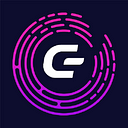A block reward is a fixed number of tokens or cryptocurrency given to the miner or validator who successfully creates and adds a new block to the blockchain. This incentive encourages network participants to contribute computational resources in order to validate transactions and secure the network.
Block rewards play a crucial role in the functioning and security of many blockchains and are an important factor to consider when evaluating the design of a blockchain system. To know more about Block Reward read the article!
What is Block Reward?
A block reward is a payment made to a miner in exchange for adding a new block to a blockchain and it acts as an incentive for people to participate in the network and keep it secure. A reward is typically several newly minted cryptocurrency tokens as well as any transaction fees in the block. The size of the reward can vary, but it is designed to strike a balance between incentivizing participants and controlling the rate at which new tokens are released into the market as well as this is a key feature of blockchain protocols based on proof of work and proof of stake.
Components of Block Reward
The components of reward typically include:
1: Block Subsidy — A block subsidy is a component of a block reward, which refers to newly minted cryptocurrency tokens given to a miner or validator in exchange for adding a new block to the blockchain. The block subsidy is a method of introducing new tokens into the market while also incentivizing network participation and controlling the rate at which new tokens are released.
2: Transaction Fees — A block reward also includes transaction fees. They are the fees that users pay when they conduct a blockchain transaction. Transaction fees can be earned by miners or validators by including these transactions in the blocks they add to the blockchain.
3: Bonuses or Incentives — Some blockchains may offer bonuses or incentives for completing specific tasks or making a specific contribution to the network. These bonuses can be included in the block reward, providing participants with additional incentives.
Difference Between Block Reward and Transaction Fees:
The block reward and transaction fees are two components of the reward structure for miners or validators in a cryptocurrency network, here the following is the distinction between the two:
Block Reward: A block reward is a payment made to a miner or validator in exchange for adding a new block to the blockchain. The reward is typically made up of newly minted cryptocurrency tokens and is intended to encourage network participation while also securing the network.
Transaction Fees: Transaction fees are the fees that users pay to have their transactions processed and included in a block. These fees are paid to the miner or validator who adds the block to the blockchain directly.
Block Reward Structure
A block reward’s structure typically includes the following components:
- New Tokens: Newly minted cryptocurrency tokens are the most common component of a block reward. This is the process of introducing new tokens into the market and distributing them to miners or validators who contribute to the network.
- Transaction Fees: Another component of a block reward is transaction fees. They are the fees that users pay when they conduct a blockchain transaction. Transaction fees can be earned by miners or validators by including these transactions in the blocks they add to the blockchain.
- Token Supply Control: The block reward structure is intended to strike a balance between incentivizing network participation and controlling the rate at which new tokens are introduced into the market.
- Network Security Incentive: The block reward is intended to incentivize network participants to secure the network and prevent malicious behavior.
- Bonuses or Incentives: Some blockchains may offer bonuses or incentives for completing specific tasks or making a specific contribution to the network.
How Are Block Rewards Created?
The following are the steps for creating a block reward:
1: Mining — A miner or validator is someone who adds a new block to the blockchain. The block reward incentivizes this process, which requires significant computational effort.
2: Verification — To ensure the new block’s validity, it is verified by other network participants.
3: Issuance — If the new block is verified and deemed valid, the block reward is distributed to the miner or validator who added it.
4: Distribution — The newly minted tokens are then delivered to the miner’s or validator’s cryptocurrency wallet.
What is the Importance of Block Reward?
The block reward is important for several reasons:
- Incentivizing Network Participation
- Controlling Token Supply
- Securing the Network
- Providing Revenue for Network Participants
- Supporting Decentralization
Pros of Block Reward
Pros of block reward are given below:
- Incentivizes Network Participation
- Secures the Network
- Supports Decentralization
- Controls Token Supply
Cons of Block Reward
Cons of block rewards are given below:
- Increases Energy Consumption
- May Encourage Hoarding
- Centralizes Rewards
- Increases Market Volatility
Conclusion
Block rewards are crucial in blockchain technology because they encourage network participation, control token supply, and secure the network. They are generated as a result of mining or validating new blocks and are distributed to participants as a reward for their efforts. While the block reward has many advantages, it also has some disadvantages, including increased energy consumption and market volatility.
